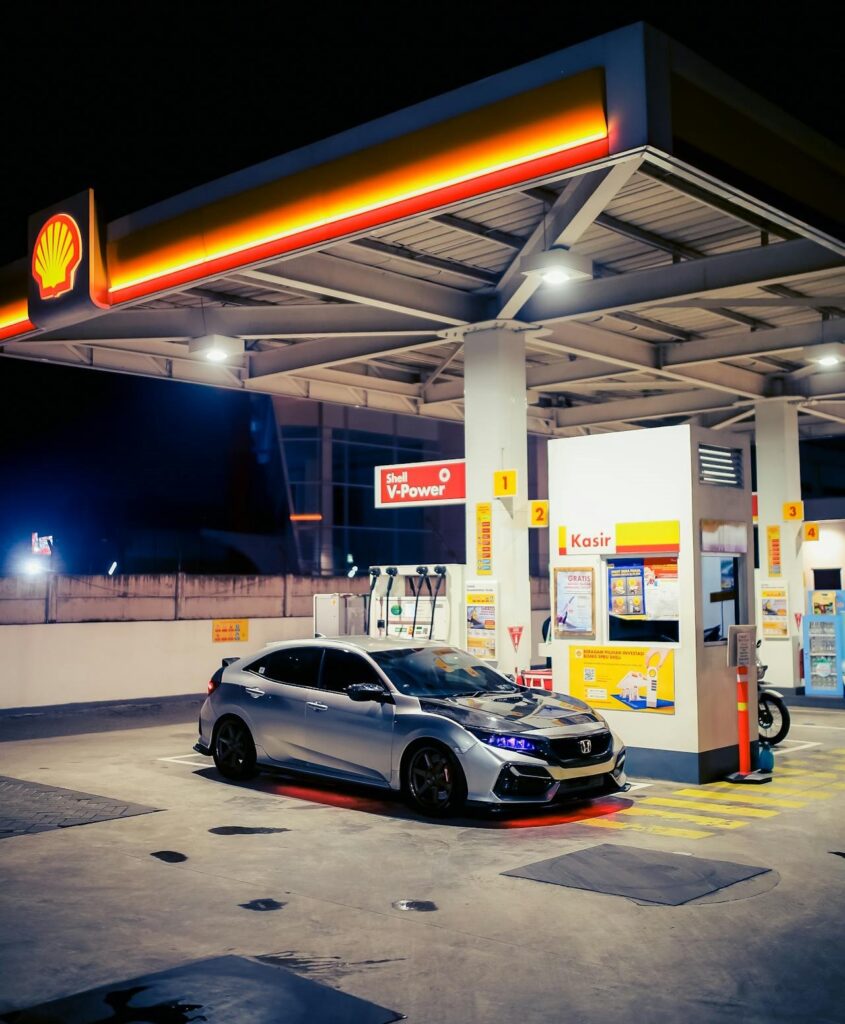Introduction:
Efficient fuel consumption in cars is a topic of paramount importance in today’s world. With concerns over environmental sustainability, rising fuel costs, and the finite availability of fossil fuels, the automotive industry and consumers alike are increasingly focused on maximizing the efficiency of fuel usage in vehicles. This article explores various aspects of fuel efficiency in cars, including strategies, technologies, and future trends aimed at achieving optimal fuel consumption.
Fuel efficiency figures play a pivotal role in the decision-making process for individuals in the market for both new and pre-owned vehicles. With fuel prices soaring to unprecedented levels, meeting the energy demands of our vehicles and driving habits has become increasingly challenging.
If the concern over rising fuel costs resonates with you, then delving into this article is highly recommended. It serves as an invaluable resource, offering insights into general fuel consumption for automobiles, with a specific focus on Suzuki vehicles.
Furthermore, we’ve curated a selection of straightforward tips aimed at enhancing your vehicle’s fuel economy, ultimately leading to substantial cost savings.
Before delving into the tips, let’s establish a foundational understanding of key terms, facilitating a more comprehensive grasp of the information presented herein.
Understanding Fuel Efficiency:
Fuel efficiency is a widely recognized concept in the automotive sector, denoting a vehicle’s capacity to derive optimal energy output from its fuel source. Cars exhibiting higher fuel efficiency are deemed as such, signifying a wise investment choice.
Fuel efficiency, often expressed in miles per gallon (MPG) or liters per 100 kilometers (L/100 km), refers to the distance a vehicle can travel per unit of fuel consumed. It is influenced by a multitude of factors, including vehicle design, engine efficiency, driving behavior, and external conditions such as road conditions and weather.
Key Factors Affecting Fuel Efficiency:
- Vehicle Design and Weight: The design and weight of a vehicle play a crucial role in its fuel efficiency. Lighter vehicles generally require less energy to propel, resulting in improved fuel economy. Manufacturers are increasingly utilizing lightweight materials such as aluminum and carbon fiber to reduce vehicle weight without compromising safety or performance.
- Engine Efficiency: The efficiency of an engine directly impacts fuel consumption. Modern engines employ advanced technologies such as direct fuel injection, turbocharging, and variable valve timing to optimize combustion and improve efficiency. Additionally, the development of hybrid and electric power-trains offers significant gains in fuel efficiency by leveraging electric propulsion and regenerative braking.
- Aerodynamics: Aerodynamic drag is a major factor affecting fuel efficiency, especially at higher speeds. Vehicle designs that minimize drag through features such as sleek body shapes, under body covers, and active grille shutters help reduce fuel consumption by requiring less energy to overcome air resistance.
- Driving Behavior: Driver behavior significantly influences fuel efficiency. Aggressive driving habits such as rapid acceleration, speeding, and abrupt braking can significantly increase fuel consumption. Adopting Eco-friendly driving practices such as maintaining a steady speed, anticipating traffic flow, and avoiding unnecessary idling can lead to substantial fuel savings.
- Maintenance: Regular maintenance is essential for optimizing fuel efficiency. Properly inflated tires, clean air filters, and well-maintained engines operate more efficiently, resulting in improved fuel economy. Routine maintenance tasks such as oil changes, spark plug replacements, and fuel system cleanings help ensure peak performance and fuel efficiency.
Strategies for Improving Fuel Efficiency:
- Hybridization and Electrification: Hybrid electric vehicles (HEVs) and plug-in hybrid electric vehicles (PHEVs) combine internal combustion engines with electric motors to improve fuel efficiency and reduce emissions. Full electric vehicles (EVs) eliminate the need for gasoline altogether, relying solely on electric propulsion powered by batteries or fuel cells.
- Start-Stop Systems: Start-stop systems automatically shut down the engine when the vehicle comes to a stop, such as at traffic lights or in heavy traffic, and restart it when the driver releases the brake pedal. This technology reduces fuel consumption and emissions by minimizing idle time without compromising driver convenience.
- Continuously Variable Transmissions (CVTs): CVTs seamlessly adjust gear ratios to maintain the engine operating at its most efficient speed, optimizing fuel efficiency across a wide range of driving conditions. Unlike traditional automatic transmissions with fixed gear ratios, CVTs offer smoother acceleration and improved fuel economy.
- Light-weighting: Vehicle manufacturers are increasingly incorporating lightweight materials such as aluminum, magnesium, and carbon fiber composites to reduce vehicle weight and improve fuel efficiency. Lighter vehicles require less energy to accelerate and decelerate, resulting in lower fuel consumption and reduced emissions.
- Advanced Driver Assistance Systems (ADAS): ADAS features such as adaptive cruise control, lane-keeping assist, and predictive energy management systems help optimize fuel efficiency by optimizing driving behavior and reducing energy waste. These systems leverage sensors, cameras, and real-time data processing to enhance driver awareness and improve fuel economy.
Seven golden rules for achieving optimal fuel efficiency:
- Refrain from driving your vehicle at excessively high speeds.
- Avoid aggressive acceleration and hard braking.
- Maintain proper tire pressure at all times.
- Limit the use of your air conditioner whenever possible.
- Keep windows closed, particularly when driving on highways.
- Avoid unnecessary loading of your vehicle.
- Consider investing in a fuel-efficient vehicle with excellent fuel mileage.
Technological Advancements for Enhanced Fuel Efficiency:
- Downsized Turbocharged Engines: Downsizing involves replacing larger-displacement engines with smaller, turbocharged units that deliver comparable power output while consuming less fuel. Turbocharging increases engine efficiency by forcing more air into the combustion chamber, allowing for more complete combustion and improved fuel economy.
- Variable Valve Timing and Lift: Variable valve timing (VVT) and variable valve lift (VVL) technologies optimize engine performance and fuel efficiency by adjusting the timing and duration of valve opening and closing based on operating conditions. This enables engines to operate more efficiently across a wider range of speeds and loads, reducing fuel consumption and emissions.
- Active Aerodynamics: Active aerodynamic systems dynamically adjust vehicle aerodynamics to minimize drag and improve fuel efficiency. Features such as active grille shutters, adjustable spoilers, and movable aerodynamic elements optimize airflow around the vehicle, reducing drag and enhancing fuel economy, especially at higher speeds.
- Predictive Energy Management: Predictive energy management systems use real-time data and predictive algorithms to optimize vehicle energy usage and maximize fuel efficiency. By analyzing factors such as traffic conditions, terrain, and driving behavior, these systems proactively adjust power-train operation to minimize energy waste and improve overall efficiency.
- Advanced Materials and Manufacturing Techniques: Ongoing research into advanced materials and manufacturing techniques aims to further reduce vehicle weight and improve fuel efficiency. Innovations such as 3D printing, carbon fiber reinforced polymers (CFRP), and high-strength steel alloys enable the production of lighter, stronger, and more fuel-efficient vehicles without sacrificing safety or performance.
Future Trends in Fuel Efficiency:
- Electrification and Vehicle Electrification: The electrification of vehicles is expected to continue gaining momentum, with an increasing number of automakers investing in electric vehicle (EV) development and infrastructure. Advancements in battery technology, charging infrastructure, and renewable energy integration will further enhance the viability and appeal of electric vehicles, leading to widespread adoption and reduced reliance on fossil fuels.
- Connected and Autonomous Vehicles: Connected and autonomous vehicles (CAVs) have the potential to revolutionize transportation and fuel efficiency. By leveraging vehicle-to-vehicle (V2V) and vehicle-to-infrastructure (V2I) communication, CAVs can optimize traffic flow, reduce congestion, and minimize fuel consumption through intelligent routing, platooning, and cooperative driving strategies.
- Sustainable Fuels: The development and adoption of sustainable fuels such as biofuels, synthetic fuels, and hydrogen offer alternative pathways to reducing greenhouse gas emissions and achieving carbon neutrality in the transportation sector. These fuels can be produced from renewable sources such as biomass, carbon capture and utilization (CCU), and electrolysis of water using renewable electricity, providing low-carbon alternatives to conventional fossil fuels.
- Energy-Efficient Infrastructure: Investments in energy-efficient infrastructure, including smart grids, renewable energy generation, and electric vehicle charging networks, are essential for supporting the transition to a more sustainable transportation system. By integrating renewable energy sources and optimizing energy distribution and storage, energy-efficient infrastructure can reduce the carbon footprint of transportation and facilitate the widespread adoption of electric vehicles.
Conclusion:
Efficient fuel consumption in cars is a multifaceted challenge that requires a holistic approach encompassing vehicle design, technology innovation, driver behavior, and infrastructure development. By leveraging advancements in engine efficiency, light-weighting, electrification, and connectivity, the automotive industry can continue to make significant strides towards maximizing fuel efficiency and reducing environmental impact. With ongoing research, investment, and collaboration, the vision of a sustainable transportation future powered by efficient and environmentally friendly vehicles is within reach.

